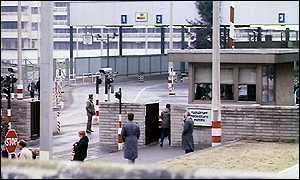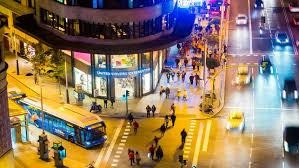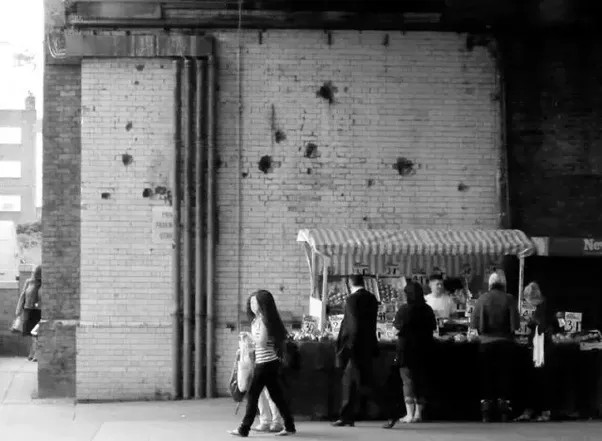Even though the Berlin Wall was open, the situation in East Berlin was still extremely tense.
Shortly after the Berlin Wall was opened, I visited friends in East Berlin for an extended weekend, blissfully unaware of the tension that was still present. The East German guards stamped my passport with only a 24-hour visa as my train crossed over the border. That did not bother me much. I figured no one had to follow the rules in East Berlin any more.
Or did we?
I overstayed my 24-hour visa by three days and had a harrowing experience with East Berlin border guards trying to return to West Berlin at Checkpoint Charlie. Feigning confusion and speaking only English with the most incoherent Southern drawl I could muster, the guards reluctantly allowed me through after 30 minutes of interrogation.
These edgy East Berlin border guards simply did not know what to do. Most seemed locked in their training and would level their machine guns at anyone who got too close. The world as they knew it– their communist ideology, their State, their duty–was crumbling all around them, along with the Wall. Frankly, I’m surprised none of them ended up going off half-cocked and shooting somebody.
Nowhere were the differences between East and West Germany more apparent than in East and West Berlin. These cities were truly like night and day.
In West Berlin, there were bright lights, color, advertising, modern technology, modern architecture, people happily bustling about. West Berlin was like a brand-new city. East Berlin was just gray. The buildings were gray. The sky was gray. The people were gray.
An agency like the EPA was non-existent in East Germany; the communist government did not care how much it polluted the environment. When going from West Berlin to East Berlin, you immediately noticed the smell. A sharp, pungent odor of industrial pollution hung in the air, assaulting the nostrils.
While West Germany was rebuilt after WWII, thanks to the Marshall Plan, it was as if East Germany stood still in time, like a blurry, black and white photo. Bullet-riddled buildings barely standing, like crippled, old men. Much of the damage from mortar shells was simply left. There was hardly any progression in industry or technology, hardly any improvements in anything.
In the almost 30 years that the wall existed, East and West Germany became exponentially different from each other: politically, economically, culturally, and socially.
The West Germans were the “haves.” Often referred to as die drueben or “them over there,” the East Germans were the “have nots” and were looked upon as less by their West German cousins. Even though their German heritage was the same, they had become two different peoples.
Part 3 of this series on the anniversary of the fall of the Berlin Wall will be posted next week.
Since 2011, Susan Gleason has taught German online. She has an extensive background in foreign languages.
Traveling internationally since she was eight years old, her travels include Europe, Scandinavia, Estonia, Australia, New Zealand, Canada, Mexico, the Bahamas, South and Central Americas, and South Africa. Susan studied German in college and graduated from UNC-Chapel Hill in 1986. In 1985, while still a college student, Susan led a Bible-smuggling operation into Soviet-controlled Estonia. She lived in Germany from 1986-1991, experienced the fall of the Berlin Wall, and had some daring adventures outwitting East Berlin border guards. Susan did post-graduate studies at Universität Würzburg, Universität Bonn, and FAS Germersheim. She worked as an interpreter at the international trade fairs in Cologne, as well as a translator and private tutor.











